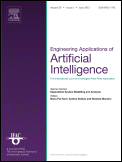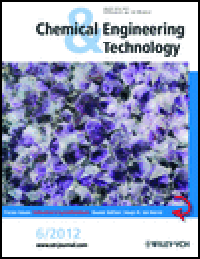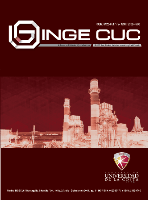
Sigma Journal of Engineering and Natural Sciences-Sigma Muhendislik ve Fen Bilimleri Dergisi
Scope & Guideline
Exploring Interdisciplinary Frontiers in Research
Introduction
Aims and Scopes
- Engineering Innovations:
The journal publishes research on advancements in engineering technologies across various disciplines, including mechanical, civil, electrical, and materials engineering. - Natural Sciences Applications:
It covers studies that apply scientific principles from disciplines such as chemistry, biology, and physics to solve real-world problems, particularly in environmental and health contexts. - Mathematical Modeling and Computational Techniques:
A significant focus is on mathematical modeling, computational analysis, and algorithm development, including the use of machine learning and artificial intelligence in engineering and scientific research. - Sustainable Development:
Research aimed at promoting sustainability, including environmental management, renewable energy, and waste management practices, is a core area of interest. - Interdisciplinary Approaches:
The journal encourages interdisciplinary research that integrates engineering and natural sciences to address complex challenges, reflecting the interconnected nature of modern problems.
Trending and Emerging
- Machine Learning and AI Applications:
The integration of machine learning and artificial intelligence in engineering and natural sciences is a rapidly growing theme, highlighting its potential in predictive modeling, data analysis, and automation. - Sustainable Energy Solutions:
Research focusing on renewable energy sources, energy efficiency, and sustainable practices is increasingly prominent, driven by global sustainability goals and climate change concerns. - Advanced Materials and Nanotechnology:
There is a rising interest in the development and application of advanced materials, including nanomaterials, for their unique properties and functionalities in various engineering applications. - Health and Biotechnology Innovations:
The intersection of engineering and health sciences, particularly in biotechnology, medical devices, and health informatics, is emerging as a significant research area. - Environmental Impact Assessments:
An increasing trend in studies assessing environmental impacts, risk management, and ecological sustainability reflects growing awareness of environmental issues in engineering practices.
Declining or Waning
- Traditional Materials Engineering:
Research focusing solely on conventional materials engineering is becoming less prominent, possibly due to the increasing emphasis on advanced materials and composites. - Basic Theoretical Studies:
There is a decreasing trend in purely theoretical studies without practical applications, as the journal shifts towards research with tangible impacts and interdisciplinary relevance. - Localized Environmental Studies:
While environmental issues remain a priority, localized studies that do not integrate broader contextual analyses or global implications are less frequently published. - Conventional Energy Systems:
Research centered on traditional energy systems is waning as the journal increasingly emphasizes renewable energy technologies and sustainable practices.
Similar Journals

ENGINEERING APPLICATIONS OF ARTIFICIAL INTELLIGENCE
Transforming Engineering Through AI InnovationENGINEERING APPLICATIONS OF ARTIFICIAL INTELLIGENCE, published by PERGAMON-ELSEVIER SCIENCE LTD, stands as a premier journal within the disciplines of Artificial Intelligence, Control and Systems Engineering, and Electrical and Electronic Engineering. With an impressive Q1 ranking across these categories in 2023 and a strong presence recognized by Scopus rankings, this journal provides a vital platform for disseminating cutting-edge research innovations and applications that harness the power of AI in engineering. Spanning over three decades of scholarly contributions from 1988 to 2024, the journal appeals to a diverse audience including researchers, industry professionals, and students eager to explore the transformative impacts of artificial intelligence on engineering practices. While not an open-access journal, it ensures that significant advancements in the field remain accessible through library subscriptions. By fostering scholarly dialogue and advancing knowledge in engineering applications of AI, this journal plays an integral role in shaping the future of technology and innovation.

Ingenius-Revista de Ciencia y Tecnologia
Empowering researchers to shape the future of technology.Ingenius-Revista de Ciencia y Tecnología is a premier academic journal published by the UNIV POLITECNICA SALESIANA ECUADOR, dedicated to the dissemination of high-quality research across various engineering and technological fields. Established in 2011 as an Open Access platform, this journal has fostered knowledge sharing and collaboration among scholars and industry professionals. With a scope that encompasses diverse disciplines including Aerospace, Automotive, Biomedical, Civil, and Computational Engineering, Ingenius serves as a vital resource for researchers aiming to contribute to the advancement of technology and engineering solutions. Although currently placed in the Q4 category across multiple engineering disciplines based on the 2023 rankings, the journal is steadfast in its mission to elevate the quality of published work and enhance its visibility in global research databases. Given its commitment to open access and scholarly dissemination, Ingenius plays a significant role in promoting innovative ideas and fostering educational growth within the engineering community.

CHEMICAL ENGINEERING & TECHNOLOGY
Exploring the Intersection of Chemistry and TechnologyChemical Engineering & Technology is a prestigious journal published by Wiley-VCH Verlag GmbH, focusing on the evolving field of chemical engineering and its related disciplines. With an ISSN of 0930-7516 and E-ISSN of 1521-4125, the journal has established a robust platform for researchers and practitioners to share pioneering studies and innovative technologies within the field. Classified in the second quartile (Q2) across multiple categories such as Chemical Engineering, Chemistry, and Industrial and Manufacturing Engineering, it holds an impressive rank in the Scopus database, indicating its significant contribution to the academic community. The journal's commitment to advancing knowledge is reflected in its extensive convergence of research from 1987 to 2024, providing a comprehensive archive of scholarly work. Researchers, professionals, and students benefit from the latest insights and findings, enriching the dialogue around chemical processes and methodologies. Though it operates under a traditional subscription model, the accessibility of this journal is crucial for those engaged in both theoretical and applied aspects of chemical engineering.

Engineering Journal-Thailand
Elevating research excellence in the heart of Thailand.Engineering Journal-Thailand, published by Chulalongkorn University, Faculty of Engineering, is a prominent academic journal dedicated to advancing knowledge and research in the diverse field of engineering. With an ISSN of 0125-8281 and an unwavering commitment to quality, the journal has established a substantial presence in the academic community since its inception in 2009. As of 2023, it is ranked in the Q3 category for Engineering (miscellaneous) and has achieved a Scopus rank of 137 out of 307, placing it in the 55th percentile of general engineering journals. Although it operates without open access, its impact within the engineering domain is significant, providing a vital platform for researchers, professionals, and students to disseminate their findings and engage with contemporary engineering challenges. The journal serves as a vital resource for those seeking to stay at the forefront of engineering innovation and contributes to the global discourse by bridging local insights with international perspectives.

Revista Facultad de Ingenieria-Universidad de Antioquia
Pioneering Research for a Sustainable Future.Revista Facultad de Ingenieria-Universidad de Antioquia - an esteemed, open-access journal published by IMPRENTA UNIV ANTIOQUIA since 2015 - serves as a prominent platform for the dissemination of groundbreaking research in the field of engineering. Based in Colombia, this journal provides a vital forum for engineers and researchers, ensuring that innovative ideas and methodologies are accessible to a global audience. With an ISSN of 0120-6230 and an E-ISSN of 2422-2844, it has steadily established itself in the academic landscape, achieving a quarter ranking of Q3 in the field of miscellaneous engineering as of 2023. Additionally, its position in Scopus ranks at #156 out of 307 in General Engineering highlights its commitment to high-quality research output. The journal is an invaluable resource for professionals, students, and academics alike, enabling wide-reaching access to significant advancements in engineering while encouraging collaborative research.

Gazi University Journal of Science
Connecting insights to drive the evolution of engineering and science.Gazi University Journal of Science, published by GAZI UNIV in Turkey, stands as a pivotal platform for scholarly communication in the fields of engineering and multidisciplinary research. With an ISSN of 2147-1762, this journal has been a significant contributor to the academic landscape since its establishment, converging insights from diverse scholarly traditions and fostering interdisciplinary innovation from 2009 to 2024. Holding a respectable Q3 ranking in both Engineering (miscellaneous) and Multidisciplinary categories for 2023, it signifies an increasing influence in the scientific community, evidenced by its Scopus ranks, including a notable position of 65th out of 171 in Multidisciplinary and 190th out of 307 in General Engineering. The journal's commitment to advancing knowledge, promoting research excellence, and supporting the academic community makes it an essential resource for researchers, professionals, and students eager to stay at the forefront of science and engineering developments.

Ingenieria
Connecting research and real-world engineering solutions.Ingenieria, published by the Universidad Distrital Francisco José de Caldas, is a distinguished open-access journal that has been advancing the field of engineering since 1993. With its ISSN 0121-750X and E-ISSN 2344-8393, the journal serves as a vital resource for researchers, professionals, and students seeking to contribute to and stay informed about the latest advancements in general engineering. Based in Bogotá, Colombia, Ingenieria aims to foster a diverse array of scholarly articles and studies that engage with contemporary challenges in the engineering discipline, penetrating crucial areas such as sustainability, technology development, and innovative engineering practices. This journal is committed to promoting global collaboration and knowledge sharing through its open-access model, allowing unrestricted access to high-quality research. Despite its current Scopus rank of #260 out of 307 in general engineering, the publication is on an upward trajectory, reflecting its potential for impactful contributions to both local and international engineering conversations as it converges towards a dynamic focus from 2020 to 2024.

INGE CUC
Fostering Collaboration in Engineering ExcellenceINGE CUC is an esteemed open-access journal published by UNIV COSTA, focusing on advancements and innovations in engineering and applied sciences. With its ISSN 0122-6517 and E-ISSN 2382-4700, the journal has committed to providing a platform for the dissemination of high-quality research since 2010. Operating out of Barranquilla, Colombia, INGE CUC serves as a vital resource for researchers, professionals, and students alike, offering insightful articles that bridge theoretical concepts with practical applications. Though certain metrics such as HIndex may currently be under development, the journal's open-access model ensures widespread access to its contents, fostering a dynamic exchange of knowledge within the engineering community. As INGE CUC continues to evolve, it remains dedicated to promoting innovation and collaboration in the field, establishing itself as a prominent voice among peer-reviewed journals in engineering.

Journal of Engineering Science and Technology
A Platform for Innovative Engineering Solutions WorldwideThe Journal of Engineering Science and Technology, published by TAYLORS UNIV SDN BHD, is a noteworthy open-access publication dedicated to advancing knowledge across various engineering disciplines. Since its inception in 2006, this journal has provided a vital platform for researchers, professionals, and students to disseminate their findings and innovations in engineering. With a focus on interdisciplinary approaches, it aims to bridge the gap between theoretical studies and practical applications, fostering collaboration among academia and industry. Currently ranked in the Q3 quartile for General Engineering by Scopus, the journal highlights emerging trends and promotes high-quality research in engineering fields. Based in Malaysia, the journal invites contributors worldwide, making it a significant contributor to the global engineering community's discourse. With its ongoing commitment to accessibility and scholarly integrity, the Journal of Engineering Science and Technology continues to play an essential role in shaping the future of engineering research.

Acta Polytechnica Hungarica
Driving Innovation, Fostering CollaborationActa Polytechnica Hungarica is a prestigious journal dedicated to disseminating innovative research in the fields of engineering and multidisciplinary studies. Published by BUDAPEST TECH, this journal has established itself as a valuable resource since its inception in 2004, with plans to continue until 2024. With an impressive Q2 ranking in both Engineering (miscellaneous) and Multidisciplinary categories as of 2023, it ranks #68 out of 307 in the Scopus Engineering sector, placing it in the 78th percentile of its field. The journal promotes open access to scholarly articles, ensuring that important research is accessible to a global audience, fostering collaboration and dissemination of cutting-edge findings. As it serves a diverse community of researchers, professionals, and students, Acta Polytechnica Hungarica is essential for those seeking to stay at the forefront of engineering advancements and innovative practices.